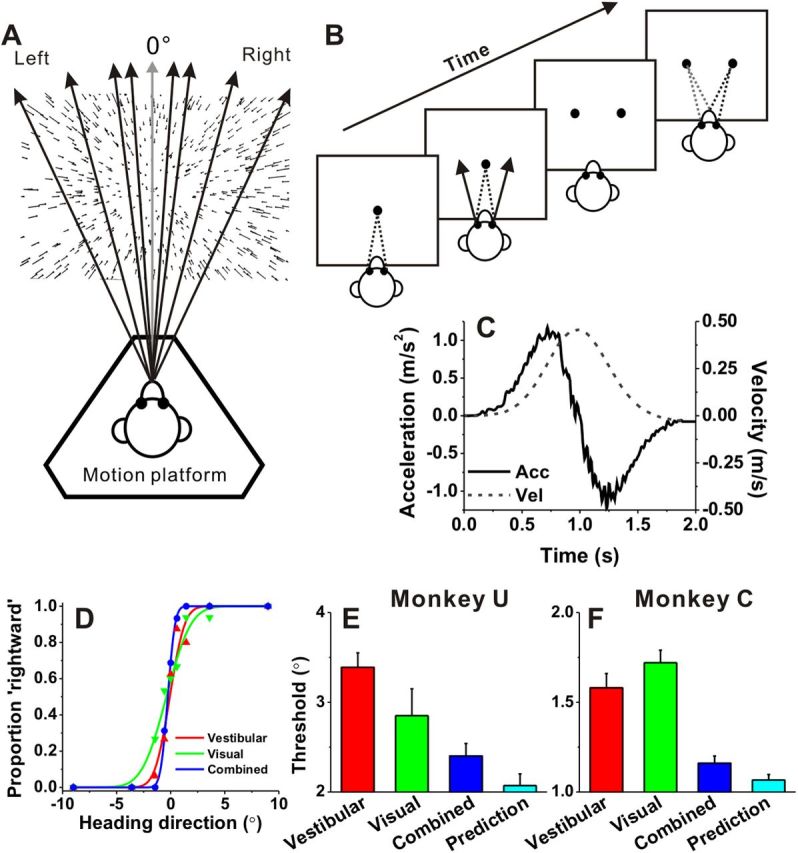Figure 1.

Heading task and behavioral performance. A, Monkeys were seated on a motion platform and were translated forward along different heading directions in the horizontal plane to provide vestibular stimulation. A projector mounted on the platform displayed images of a 3D star field, and thus provided visual motion (optic flow) stimulation. B, After fixating a visual target, the monkey experienced forward motion with a small leftward or rightward (arrow) component, and subsequently reported his perceived heading (“left” vs “right”) by making a saccadic eye movement to one of two targets. C, The inertial motion stimulus followed a Gaussian velocity profile over the stimulus duration of 2 s (dashed line). The corresponding acceleration profile was biphasic (solid lines) with a peak acceleration of 1 m/s2 (shown as the output of a linear accelerometer attached to the motion platform). D, Example psychometric functions from one session. The proportion of “rightward” decisions is plotted as a function of heading direction. Red, green, and blue symbols represent data from the vestibular, visual, and combined conditions, respectively. Smooth curves are best-fitting cumulative Gaussian functions. E, F, Average psychophysical thresholds from two monkeys (monkey U, n = 31 and monkey C, n = 64) for each of the three stimulus conditions, and predicted thresholds computed from optimal cue integration theory (cyan). Error bars indicate SEM.
